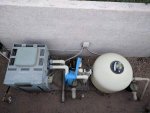There are various known quirks with ORP sensors that can cause problems in specific situations. Non-chlorine shocks can sometimes cause high ORP readings, even when chlorine levels are quite low, leaving a pool unsanitized. CYA levels above 50 can reduce the change in ORP as chlorine increases to such small values that accurate automation is impossible. Readings vary from one ORP sensor to another and no reliable calibration standard exists. Therefore, ORP readings can only be taken as a relative indication and not as an absolute number. Dissolved hydrogen gas from a SWG can lower ORP readings, sometimes masking the ORP increase from chlorine production. ORP sensors measure extremely small voltages, so stray currents in the water can cause problems. ORP is very sensitive to PH, so you need to also have PH automation or FC levels can fluctuate significantly.
There has also been a running debate: Do ORP readings or FC readings predict proper sanitation levels more reliably? I believe that FC is a better indicator. Chem Geek discusses this further
here.
Sadly sensors that can directly read the FC level are very expensive, thousands of dollars, and thus impractical for most applications. Without a FC sensor, ORP is the next best alternative, despite it's issues.


